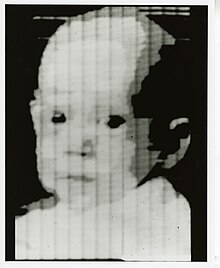This article needs additional citations for verification. (August 2024) |


Drum scanners are a type of image scanner that capture image information with photomultiplier tubes (PMT), rather than the charge-coupled device (CCD) arrays found in flatbed scanners and inexpensive film scanners. "Reflective and transmissive originals are mounted on an acrylic cylinder, the scanner drum, which rotates at high speed while it passes the object being scanned in front of precision optics that deliver image information to the PMTs. Modern color drum scanners use three matched PMTs, which read red, blue, and green light, respectively. Light from the original artwork is split into separate red, blue, and green beams in the optical bench of the scanner with dichroic filters."[1] Photomultipliers offer superior dynamic range and for this reason, drum scanners can extract more detail from very dark shadow areas of a transparency than flatbed scanners using CCD sensors. The smaller dynamic range of the CCD sensors, versus photomultiplier tubes, can lead to loss of shadow detail, especially when scanning very dense transparency film.[2] While mechanics vary by manufacturer, most drum scanners pass light from halogen lamps though a focusing system to illuminate both reflective and transmissive originals.
- ^ Pushkar O.I., (2011), Information systems and technologies. Summary of lectures. /O.I. Pushkar, K.S. Sibilyev. – Kharkiv: Publishing House of KhNUE, p.38
- ^ Sachs, J. (2001-02-01). "Scanners and how to use them" (PDF). Digital Light & Color. Retrieved 2015-11-08.